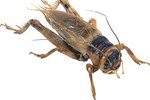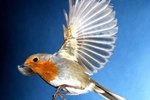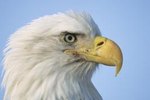
Bird-watching, a favorite pastime among many people spanning all generations, is about more than watching. It's really about bird identification -- which isn't always a simple task, as many bird species have distinguishing characteristics in common with others. For example, most but not all birds with long legs and long bills are wading birds -- birds who wade through water to forage. Species in four taxonomic orders of bird are characteristically long-legged and long-billed.
Ciconiiformes: A Tall Order
The order Ciconiiformes contains six families, 47 genera and around 120 species. Within this large order are the herons, egrets, ibises, spoonbills and storks. Family Ardeidae contains the herons and egrets; ibis species and spoonbills belong to Threskiornithidae; and storks belong to Ciconiidae. The largest heron in the United States, the great blue heron (Ardea herodias), has a wingspan measuring 6 feet and is a common sight throughout most of the United States.
Just Two Gruiformes in America
Many members of the order Gruiformes superficially resemble those of Ciconiiformes in appearance and behavior. The family Gruidae, the cranes, for example, have long legs and strong, spearlike beaks. Two species inhabit North America; the rest are found mostly in Europe and Asia. The drab-colored limpkin (Aramus guarauna) is the sole member of the family Aramidae and has long legs and a long, drooping bill. Certain rails, such as the grey-necked wood rail, have long legs compared with their compressed bodies and long, thick bills; other members of their family, Rallidae, have short bills.
The Diverse Charadriiformes Order
The order Charadriiformes, commonly referred to as the shorebirds, contains several short to medium-sized birds, many of which have long legs and long bills. This order is quite diverse, however. One particularly conspicuous species is the American avocet (Recurvirostra americana), which belongs to family Recurvirostridae. This blue-legged wader has the characteristic long legs of wading birds and a bill with a strong upward and backward curve. Other long-legged, long-billed members include various plovers and the stilts.
Phoenicopteriformes: You Know Them as Flamingos
Taxonomic order Phoenicopteriformes contains only one family: Phoenicopteridae. This order is commonly referred to as the flamingos, and only three genera exist. Flamingos are distinguishable from other birds by their large size and long, thick, hooked bills. Most specimens are pale pink, although the various species have different markings of yellow, black, white or crimson. Flamingo feeding behavior is unique among birds; Flamingos filter their food much like many whales.
References
- The University of Georgia Museum of Natural History: Ciconiiformes
- The University of Georgia Museum of Natural History: Great Blue Heron
- University of Michigan BioKIDS: Cranes
- University of Michigan Animal Diversity Web: Aramus Guarauna
- University of Michigan Animal Diversity Web: Aramides Cajanea
- University of Michigan BioKIDS: Coots and Rails
- University of Michigan Animal Diversity Web: Recurvirostra Americana
- Creagrus @ Monterey Bay: Flamingos Pheonicopteridae
Resources
Photo Credits
-
Tom Brakefield/Stockbyte/Getty Images
Writer Bio
With a professional background in gardening, landscapes, pests and natural ecosystems, Jasey Kelly has been sharing her knowledge through writing since 2009 and has served as an expert writer in these fields. Kelly's background also includes childcare, and animal rescue and care.




